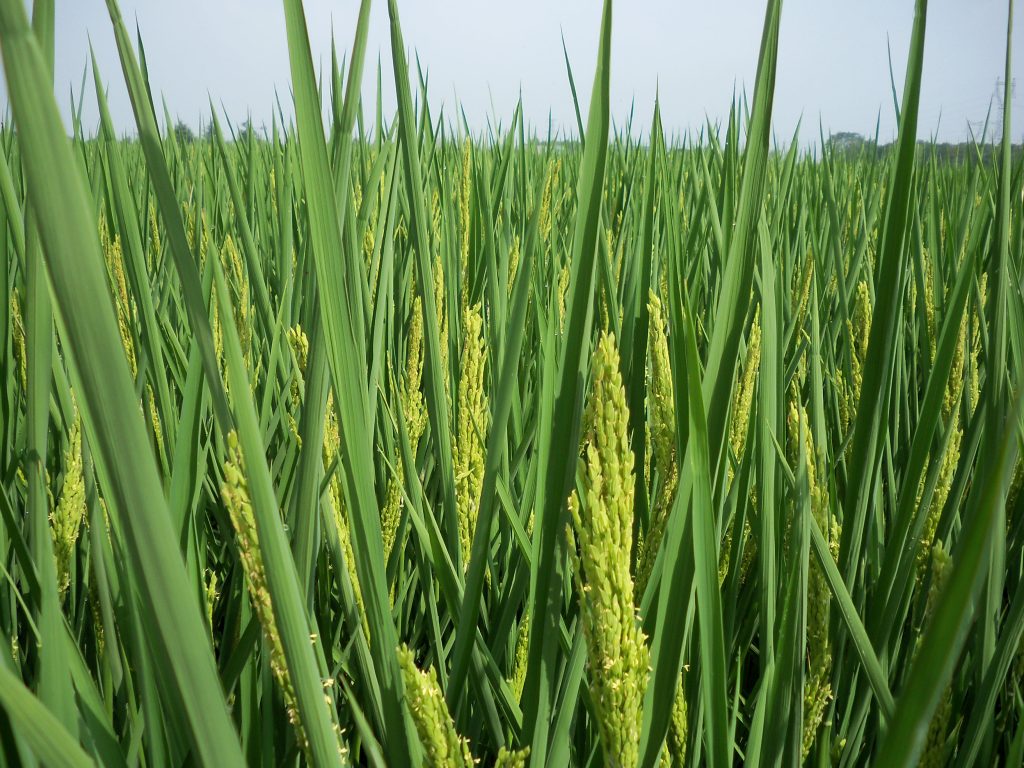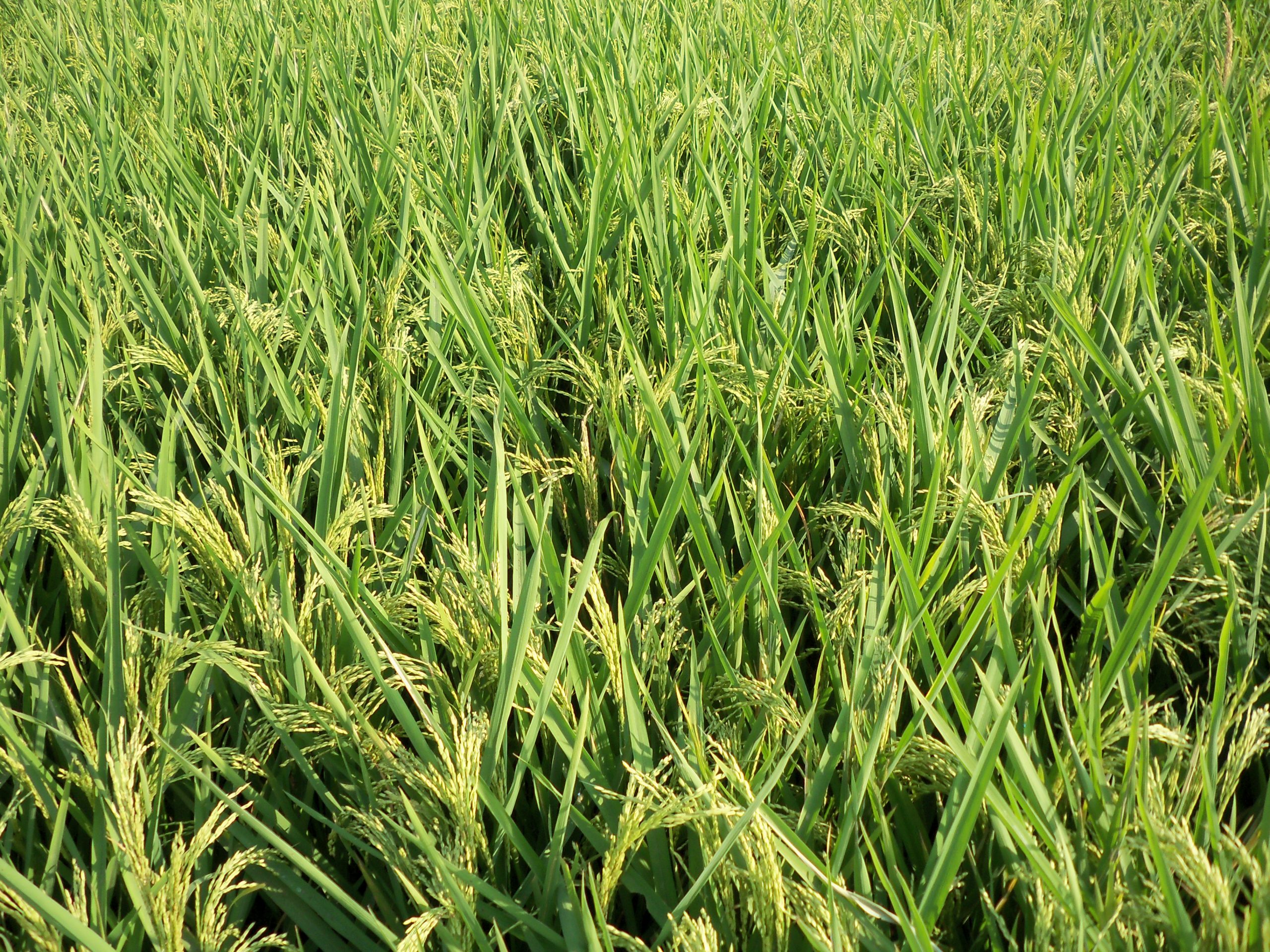Successfully marketing potassium nitrate as foliar nutrition
In the constant search for opportunities for market development of potassium nitrate, we looked at those crops in which potassium nitrate had not yet been used in fertigation or as foliar spraying, like cereal grain crops.
Therefore, two scientific trials in rice were conducted. It was concluded that spray applications with potassium nitrate increased rice crop yield and quality.

Foliar fertilization with potassium nitrate in rice
With a cultivation area of approximately 170 million hectares, rice is one of the most widely cultivated crops in the world and therefore represents a commercially interesting potential for fertilisation with potassium nitrate.
Until then, almost nothing was known about the effect of potassium nitrate in cereal crops, unlike most horticultural and fruit crops. Since herbicides and crop protection products are regularly applied in cereal crops, it was decided to investigate foliar spraying with potassium nitrate. For example, potassium nitrate can be added to the spray tank at the same time as these other agents to be sprayed in the same pass. Practical and efficient!
To prove the agricultural usefulness of potassium nitrate in crop spraying, two scientific trials were carried out in rice in Vietnam and the USA.
1. Experimental design for foliar fertilization with potassium nitrate in rice in Vietnam
This trial was carried out on two different sites (sandy soil with low K content and prone to K leaching; river clay soil with high K fixing capacity) and in two growing seasons (spring and summer). The basic fertilisation consisted of urea, single superphosphate and potassium chloride, followed by 1, 2 or 3 foliar sprays with potassium nitrate at 3% spray solution (9 kg potassium nitrate/ha), administered during one or more of the following growth stages: active tillering, initiation of the spike and end of flowering.

Rice crop.
Highest crop yields and net income with 3 sprays with potassium nitrate
Of all treatments, it was found that three sprays with a total of 27 kg potassium nitrate per hectare during active tillering, initiation of the spike and end of flowering led to the highest average yield increase with 15% more grain yield compared to the unsprayed treatment. This treatment with potassium nitrate also led to the highest net income for the farmer at both trial sites.
Foliar sprays with potassium nitrate are an interesting option to replace a basic fertilizer with potassium chloride without loss of income for the farmer
The net income was maintained when the basic fertilisation of potassium chloride was reduced to 50% in combination with three potassium nitrate sprays, and even when no basic fertilisation with potassium chloride was given in combination with three potassium nitrate sprays. In other words, this trial showed that foliar spraying with potassium nitrate could replace a basic fertilisation with potassium chloride in whole or in part without loss of income for the farmer.
This outcome offers the rice farmer the option not investing all his money into a basic fertilizer with potassium chloride before planting. Because adjustments can still be made during the growing season with foliar sprays with potassium nitrate, he can also wait and see how the crop and the market price of rice develop.
2. Experimental design for foliar fertilization with potassium nitrate in rice in the United States of America
This trial in rice consisted of two factors:
- A preplant fertilization of 0%, 50%, 75% or 100% of the recommended potassium chloride application.
- Three foliar sprays with 0 or 4.5 kg potassium nitrate per ha per spray (total 13.5 kg potassium nitrate per hectare) before irrigation, during internode elongation and at 10% flowering.
Higher crop yields with foliar sprays with potassium nitrate
Foliar spraying with potassium nitrate led to a yield increase of 3 to 5% with a basic fertilisation of 100% of the recommended potassium chloride application.
Greater stalk strength made the crop less sensitive to lodging
The effect of foliar spraying with potassium nitrate on stalk strength was also examined. Stalk strength was expressed as the weight a stalk could support until it broke.
This showed that the stalk strength increased by at least 25% after foliar spraying with potassium nitrate in treatment with 100% of the recommended potassium chloride application. Increased stalk strength makes the crop less sensitive to lodging. While lodging does not necessarily reduce the yield of a rice crop, it does slow down the harvesting process (combine has to drive slower) and thus increases labor and harvest costs per hectare.
Conclusion
Foliar sprays with potassium nitrate in rice led to higher grain yields and a crop that is less sensitive to lodging. These results led to new selling points for the market development of potassium nitrate in rice.
References
- Son, TT; LX Anh, Y Ronen and HT Holwerda. “Foliar Potassium Nitrate Application for Paddy Rice”. Better Crops, 96 (1), (2012):29-31.
- David Dunn. Potassium nitrate as a supplemental foliar fertilizer for rice production. http://www.mafg.net/Files/Potassium%20Nitrate%20As%20A%20Supplemental%20Foliar%20Fertilizer%20For%20Rice%20ProductionkqDwgs.pdf
Looking for support?
Are you looking for support in market development as a business growth strategy for one or more water-soluble fertilizers? Please contact Harmen Tjalling Holwerda of HSPN Consulting.
Contact
